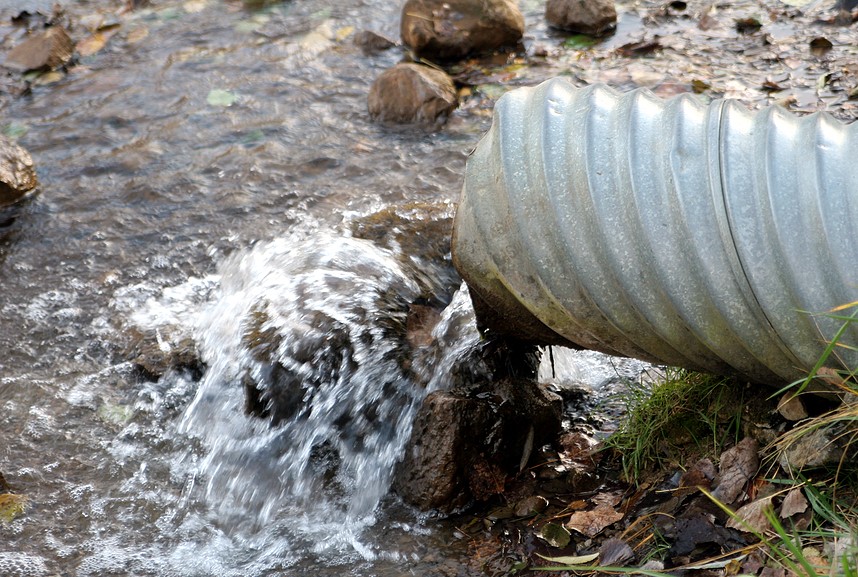News
How Is Southern Water Reducing Storm Overflows?
One of the hottest topics at the moment where the UK’s waterways are concerned is, of course, storm overflows and how they’re used by water companies up and down the country.
While these facilities do have a part to play during periods of heavy rainfall, helping to prevent flooding events and stopping sewage from backing up into properties, there is growing concern that they’re being utilised when there hasn’t been significant rainfall… or even any rainfall at all.
Storm overflow use causes environmental damage, affecting both inland and coastal water quality, something that will become more problematic as time goes on and climate change continues to have an impact on the availability of water around the country.
If current trajectories continue, we may be faced with a future where we have insufficient water supplies and the water that we do have is too polluted to be of much use.
Pollution problem
Research from Greenpeace Unearthed shows that sewage was poured into some of the most precious conservation sites in England and Wales for over 300,000 hours last year. Nearly 1,200 sewage overflows were discharged either in or near to internationally important habitats in 2022, sites that are supposed to enjoy formal conservation protection.
And earlier this year, the Guardian reported that at least 57 competitors in the World Triathlon Championship Series in Sunderland came down with sickness and diarrhoea after swimming in the sea.
Environment Agency samples taken from Roker Beach three days before the event found that there were 3,900 E.coli colonies per 100ml of water, which is over 39 times higher than typical readings taken in the month before.
Back in August, the government published its storm overflows discharge reduction plan, with new targets set in place to protect both people and the environment. Under the new regime, water companies will be required to deliver the largest infrastructure programme in their history.
For example, by 2035, water firms will need to improve all storm overflows discharging into or near every designated bathing water site, as well as improving 75 per cent of overflows discharging into high priority nature sites. And by 2050, this will apply to all remaining storm overflows, no matter where they’re located.
The government plan aims to ensure that water sector infrastructure is able to keep up with increasing external pressures, including climate change and urban growth. In the future, they will be expected to prioritise nature-based solutions, biodiversity net gain and carbon reduction in their planning.
Spotlight on: Southern Water
One of the poorest performing water companies of them all is Southern Water, with the utility company regularly coming under fire for dumping raw sewage into the sea and other waterways in its catchment area.
In 2021, for example, it was fined a record £90 million for discharging between 16 billion and 21 billion litres of raw sewage into protected seas over the course of several years. Mr Justice Jeremy Johnson observed at the time that the company had 168 previous offences of a similar nature and had been cautioned about its behaviour, but had chosen to ignore these and not make beneficial changes to its operations.
“There is no evidence the company took any notice of the penalties imposed or the remarks of the courts. Its offending simply continued,” he was quoted by the Guardian as saying.
Fast forward two years and Ofwat’s latest water company performance report shows that the sector as a whole delivered a small reduction of 15 per cent in category 1-3 pollution incidents since 2019, with less than half of firms achieving their performance commitment levels in 2022.
And while it was noted that the two poorest performing companies at the beginning of the 2020-2025 period – Southern Water and South West Water – have both made sustained progress to deliver improvements in environmental performance, more action is still required.
How is Southern Water tackling storm overflows?
Southern Water announced its Clean Rivers and Seas Plan back in November, outlining how it intends to address those storm overflows that are failing to hit the government’s 2050 target of releasing ten times or less each year.
The aim is that by 2035, 75 per cent of all its high priority overflows will hit this target, reducing spills by an average of 8,000 annually – an 81 per cent drop in spills in bathing water areas and an 80 per cent drop in releases in shellfish areas.
Furthermore, a record investment of £1.5 billion will be made between 2025 and 2035 to ensure that long-term solutions are brought in to tackle the root cause of storm overflow use, working in harmony with the environment through implementation of infrastructure improvements.
The first phase of the plan will see £700 million invested in bathing waters and shellfish areas, as well as environmentally sensitive sites. This will see spills reduced by 49 per cent in bathing sites and 50 per cent in shellfish areas, equating to a reduction of around 3,000 overflow spills a year.
A team of engineers, environmental scientists and industry experts have already made headway, it seems, with £35 million invested in nature-based pilot projects around the south east.
This includes rain gardens, water butt deployment, tree planting schemes and wetlands. This has delivered a 70 per cent reduction in spills at the Isle of Wight’s nearest storm outfall, for example.
However, it seems that there will be a knock-on effect for bill payers, with Southern Water chief executive Lawrence Gosden confirming that customer bills will need to increase in stages over time to help tackle storm overflows and redesign the system to introduce new measures in local communities.
